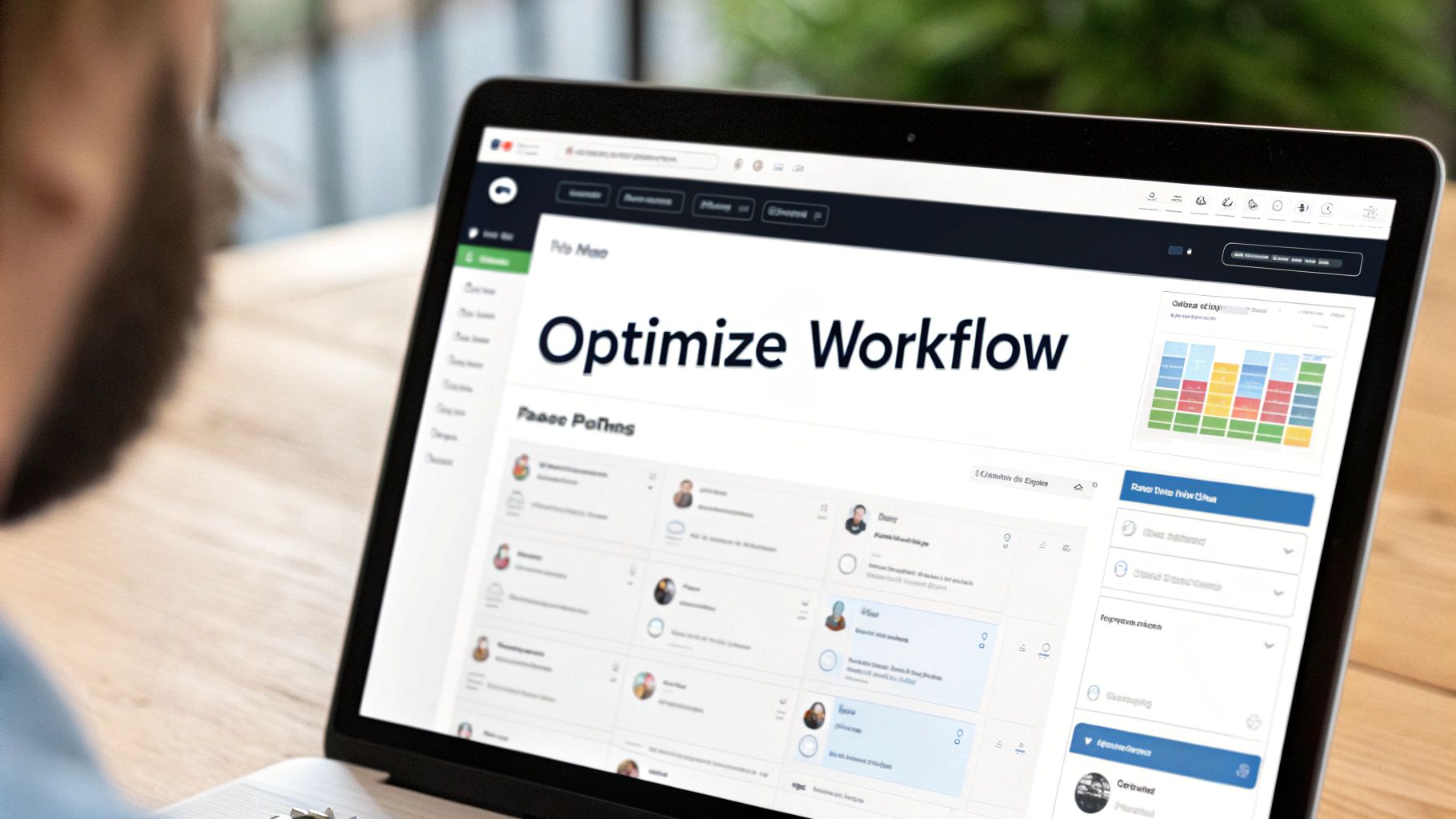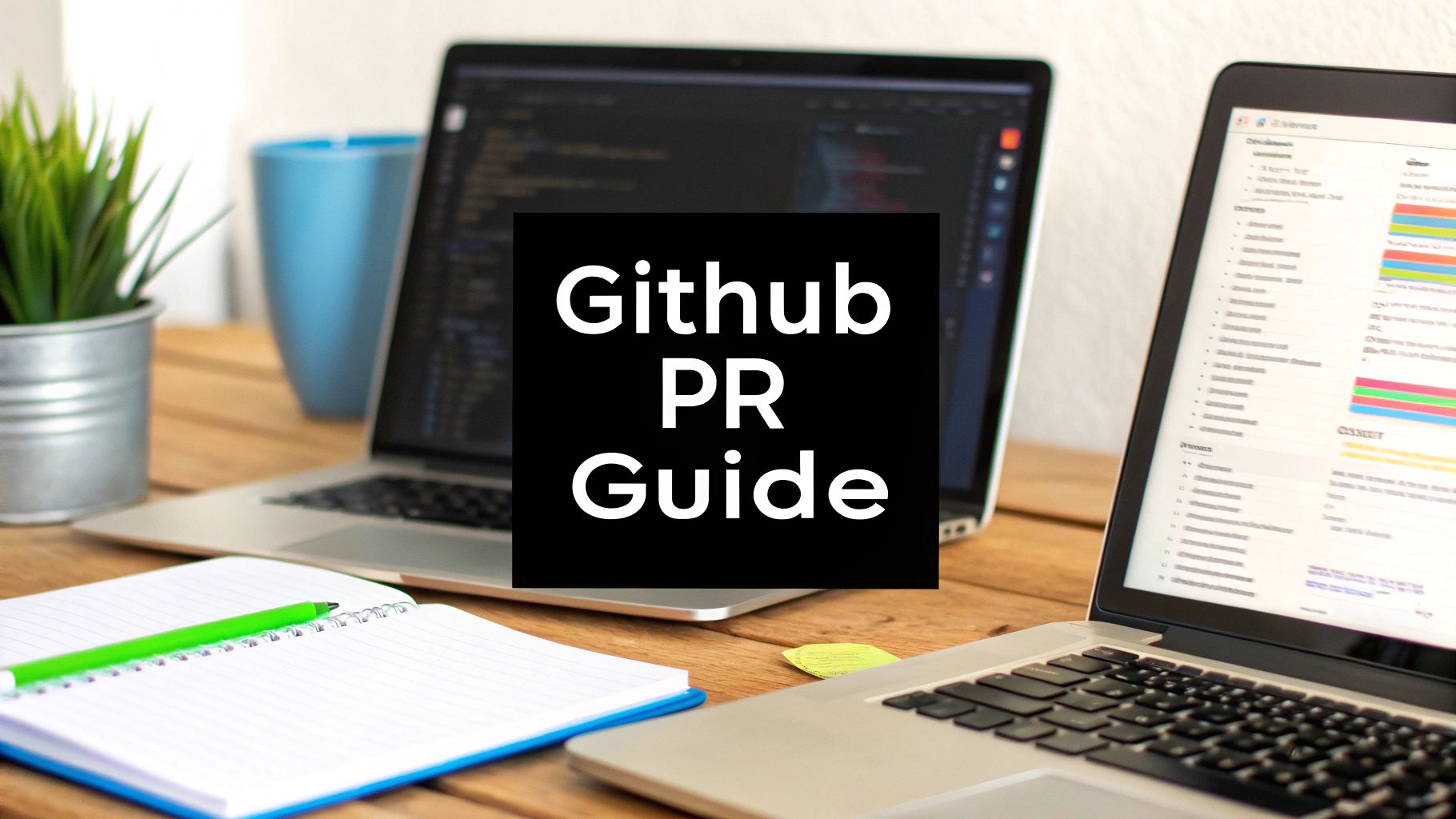The Complete GitHub PR Checklist: From Code to Confident Collaboration
Understanding the Power of GitHub Pull Requests

Pull requests (PRs) are essential to building great software together on GitHub. They enable teams to review code, have discussions, and share knowledge - all working toward creating better quality software. When teams use PRs effectively, they catch potential issues early and ensure code meets project standards.
Why GitHub PR Checklists Matter
A good PR checklist helps teams stay consistent as projects grow larger and more complex. It's easy to miss important steps when working on multiple tasks, but a checklist keeps everyone aligned. Common checklist items include verifying code style, checking test coverage, and updating documentation.
Structuring Your PR Workflow for Maximum Impact
The best teams have clear PR guidelines from the start. This means writing descriptive titles and summaries, linking related issues, and explaining what changed. Code reviews become learning opportunities where developers give helpful feedback to improve each other's skills and understanding.
Looking at PR data gives important insights into project health. The GitHub Pull Requests dashboard shows how the community contributes and how quickly maintainers respond. Small projects typically keep open PRs under 10, while larger ones may take longer due to maintainer bandwidth.
Turning PRs into a Tool for Knowledge Sharing
PRs help spread knowledge across the team by making code changes visible and open for discussion. Team members can spot potential improvements early when developers explain their changes clearly. This documentation helps future developers understand the codebase better, making it easier to maintain over time. With careful attention to detail, PRs become more than just merging code - they drive continuous learning and improvement.
Building Your Essential PR Checklist Framework

A strong GitHub PR checklist helps teams go beyond basic code reviews. Having a clear framework ensures your team catches important issues early and maintains quality standards throughout development. Think of it as your team's quality control guide - making sure nothing critical gets missed.
Key Components of a Robust GitHub PR Checklist
Your PR checklist needs several essential parts working together to keep code quality high and help team members collaborate smoothly:
- Code Style and Format: Keep code looking consistent so it's easier to read and review. Your checklist should point reviewers to your team's style guide.
- Functionality Check: Does the code do what it's supposed to do? Prompt reviewers to test changes thoroughly and verify the logic works.
- Testing Requirements: Good test coverage helps catch bugs early. Set clear expectations for test coverage and quality.
- Documentation: Clear docs and helpful code comments make future maintenance easier. Make sure documentation stays current with code changes.
- Security Review: New code can introduce security issues. Include specific checks for common security problems.
Practical GitHub PR Checklist Templates
Starting from scratch takes time, but you can build on existing templates. Take what works for other teams and adapt it to fit your needs.
A basic template might include:
- Self-Review: Has the author checked their own work first?
- Test Results: Are all tests passing?
- Documentation: Have docs been updated to match the changes?
More complex projects might need extra checks for specific requirements or regulations. Tools like Pull Checklist can help automate these checks. This keeps reviews thorough and consistent while saving time.
Implementing Your GitHub PR Checklist
Getting your checklist working well takes more than just writing it down. You need to make it part of your team's daily workflow and build good habits around using it. Put the checklist right in your PR template where everyone can see it. This makes it easy for authors and reviewers to follow. Consider using automation tools to run some checks automatically and give quick feedback.
By using these key pieces and the right tools, you can create a PR checklist that helps your team write better code and work together more smoothly. The end result? Higher quality software delivered more efficiently.
Maximizing Efficiency with PR Automation

Once you have a solid GitHub PR checklist in place, you can start automating parts of your review process. This takes care of repetitive work so your team can focus on what truly matters - thoughtful code review and collaboration. GitHub Actions is a key tool that makes this automation easy to implement.
Setting Up GitHub Actions for Automated Checks
GitHub Actions lets you create custom workflows right in your repository. You can automatically run tests, check code style, and scan for security issues whenever a PR is opened. For example, set up an action to run your test suite on every code push - this gives immediate feedback before human reviewers look at the code. You can also use code formatters and linters to automatically enforce style guidelines, which keeps your codebase consistent and reduces back-and-forth during reviews.
Getting the Most from Both Automation and Human Review
While automation helps tremendously, it can't replace human expertise. The best GitHub PR workflows combine automated checks with careful manual review. Let the automated tools handle mechanical tasks like style checking and test running. This frees up your reviewers to focus on code design, logic, and architecture. Think of automation as your first line of defense - catching obvious issues so human reviewers can dive into the more complex aspects.
Building Effective Automation Workflows
Start by identifying what slows down your review process the most. Are reviewers spending too much time on formatting? Do integration tests often fail from simple mistakes? These pain points are perfect candidates for automation. Begin with basic workflows like running tests and linters, then gradually add more sophisticated checks like deployment to staging environments.
The Pull Request Stats GitHub action can help track key metrics about your review process. For instance, it showed that one reviewer checked 37 PRs with a median time of 22 minutes and 13 comments, while another reviewed 35 PRs taking 48 minutes on average with 96 comments. This data helps spot bottlenecks and refine your process. When you thoughtfully combine automation with human expertise, you create an efficient system that consistently delivers high-quality code.
Measuring What Matters in PR Performance

Many teams track basic pull request metrics like PR counts, but the most impactful insights come from digging deeper. The best performing engineering teams use data strategically to find bottlenecks and improve their processes. Let's explore how to build an effective framework for measuring PR performance.
Key Performance Indicators for PR Success
While tracking the number of merged PRs provides a baseline, focusing only on quantity misses the bigger picture. Average time to merge offers critical insight into PR flow efficiency - lengthy merge times often signal review process bottlenecks. The number of comments per PR helps gauge collaboration quality. High comment counts may indicate healthy discussion or unclear requirements that need addressing.
Data-Driven Approaches for PR Optimization
Regular metric tracking helps identify trends and flag potential issues early. When merge times spike unexpectedly, it's time to investigate - are there too few reviewers available? Has the checklist grown overly complex? Active monitoring empowers teams to address problems proactively. Making decisions based on real data, rather than assumptions, leads to meaningful process improvements.
Tracking Metrics for Continuous Improvement
Top performing teams rely on dashboards and reporting tools to visualize their PR metrics over time. This ongoing monitoring reveals exactly how their processes are working and where adjustments are needed. The insights drive smart workflow refinements and checklist updates. Teams that consistently track performance create a culture of learning and growth.
For comprehensive reporting, consider tools designed for PR analytics. The Pull Request Analytics action helps identify team bottlenecks, monitor performance trends, and streamline analysis. It can detect metric anomalies and generate reports that integrate with tools like Slack.
Implementing Data-Driven Practices in Your Organization
Start by selecting metrics that align with your team's specific goals and challenges. Put systems in place to track and review these consistently. Tools like Pull Checklist can help automate tracking while providing valuable data about your review process. Over time, you'll build a clear picture of the factors driving your PR performance and be able to optimize your workflow more effectively. The result? Higher quality code delivered more efficiently.
Mastering Complex PR Management
Managing large pull requests (PRs) can be challenging for development teams. Teams need to coordinate major changes, handle dependencies between PRs, and roll out new features across multiple pull requests. Let's explore some proven techniques to help manage this complexity.
Breaking Down Large Changes
A key strategy is splitting big changes into smaller, focused PRs. When reviewers can focus on specific changes rather than thousands of lines of code, reviews become much more effective. Small PRs are also easier to test and debug, which helps prevent bugs. For example, instead of one massive PR to refactor a module, create separate PRs for each part of the refactoring.
Implementing Feature Flags
Feature flags are a powerful tool for managing complex changes. They let you merge incomplete features into the main branch without affecting users. This separation of deployment and release helps you build and test complex features step by step. Feature flags also provide a safety net - if something goes wrong, you can quickly turn off the new feature without rolling back other changes.
Maintaining Clear Communication
Good communication is essential when multiple people work on complex PRs. Keep the PR description updated with progress and any issues that come up. Write clear, specific commit messages and comments that explain not just what changed, but why. This context helps reviewers understand your choices and helps future developers maintain the code. The GitHub API can provide valuable insights into PR activity, especially for large repositories. You can use it to track PR metrics like number of opened, reviewed and merged PRs over time.
Balancing Speed and Stability
Successful teams find the right balance between moving quickly and maintaining quality code. While fast development is important, it shouldn't compromise code quality. Tools like Pull Checklist help enforce quality standards by making sure all checks pass before merging. This systematic approach helps teams collaborate effectively while keeping code quality high.
Cultivating Constructive PR Reviews
Code reviews play a key role in software development. While having a good PR checklist is important, how you communicate during reviews matters just as much. Effective feedback helps teams work better together and learn from each other.
Structuring Comments for Learning and Collaboration
When reviewing code, focus on giving clear, specific suggestions that help the author improve. Rather than vague critiques like "This code is messy," try something like "Consider extracting this logic into a separate function to make it more readable." Frame comments as questions to spark discussion - this helps authors think through solutions themselves.
Handling Disagreements Professionally
Differing opinions are normal in code reviews. The key is discussing them respectfully and focusing on technical merits rather than personal criticism. If you disagree with an approach, explain your alternative and its benefits clearly. Stay open to different perspectives and be willing to find middle ground through constructive dialogue.
Fostering a Positive Review Culture
Great teams use code reviews not just for quality checks, but as teaching opportunities. Highlight smart solutions, share best practices, and encourage growth. When you see good code, say so - positive reinforcement matters. Set an example by actively seeking feedback on your own work too. This creates an environment where everyone feels comfortable giving and receiving input.
GitHub PR Checklist Tools to Improve Review Quality
The right tools can help streamline reviews and maintain quality standards. Pull Checklist automates checklist creation right in your pull requests. This helps teams stay consistent, especially with large codebases or multiple contributors. By handling routine tasks automatically, reviewers can focus more on providing thoughtful, nuanced feedback that helps authors improve.
